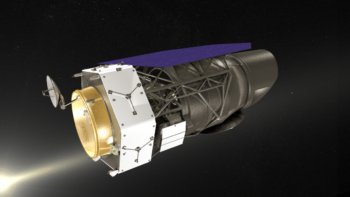To answer significant questions about planetary systems, such as whether our solar system is a rare phenomenon or if life exists on planets other than Earth, NASA should lead a large direct imaging mission – an advanced space telescope – capable of studying Earth-like exoplanets orbiting stars similar to the sun, says a new congressionally mandated report by the National Academies of Sciences, Engineering, and Medicine.
Starshade
The new report — Exoplanet Science Strategy – has made a number of findings and recommendations.
One of those recommendations is using instruments that enable direct imaging of an exoplanet by blocking the light emitted by the parent stars – such as a coronagraph or starshade.
The shade would be positioned between a telescope and a target star system. The shade is used to block the light coming from the star in order to enable the detection of light from an exoplanet.
WFIRST support
Another recommendation is that NASA should launch the Wide-Field Infrared Survey Telescope (WFIRST) mission and to demonstrate the technique of coronagraphic spectroscopy on exoplanet targets.
The study was sponsored by NASA.
To download a free PDF of the report, go to:
https://www.nap.edu/catalog/25187/exoplanet-science-strategy
A highlights document can be read here:
https://www.nap.edu/resource/25187/RH-exoplanets.pdf
Also, take a view of this video that details the report:





thanks again for calling me back